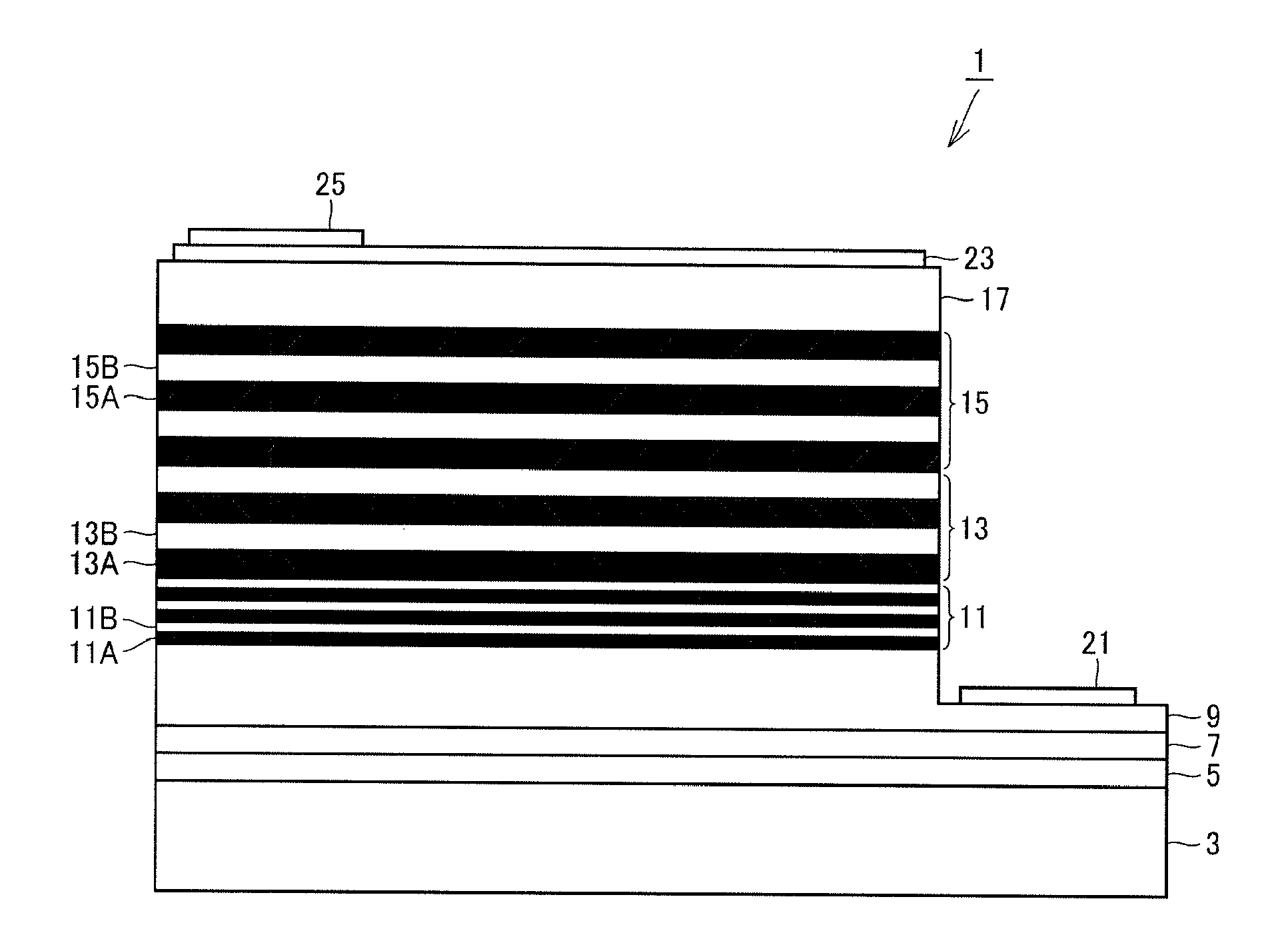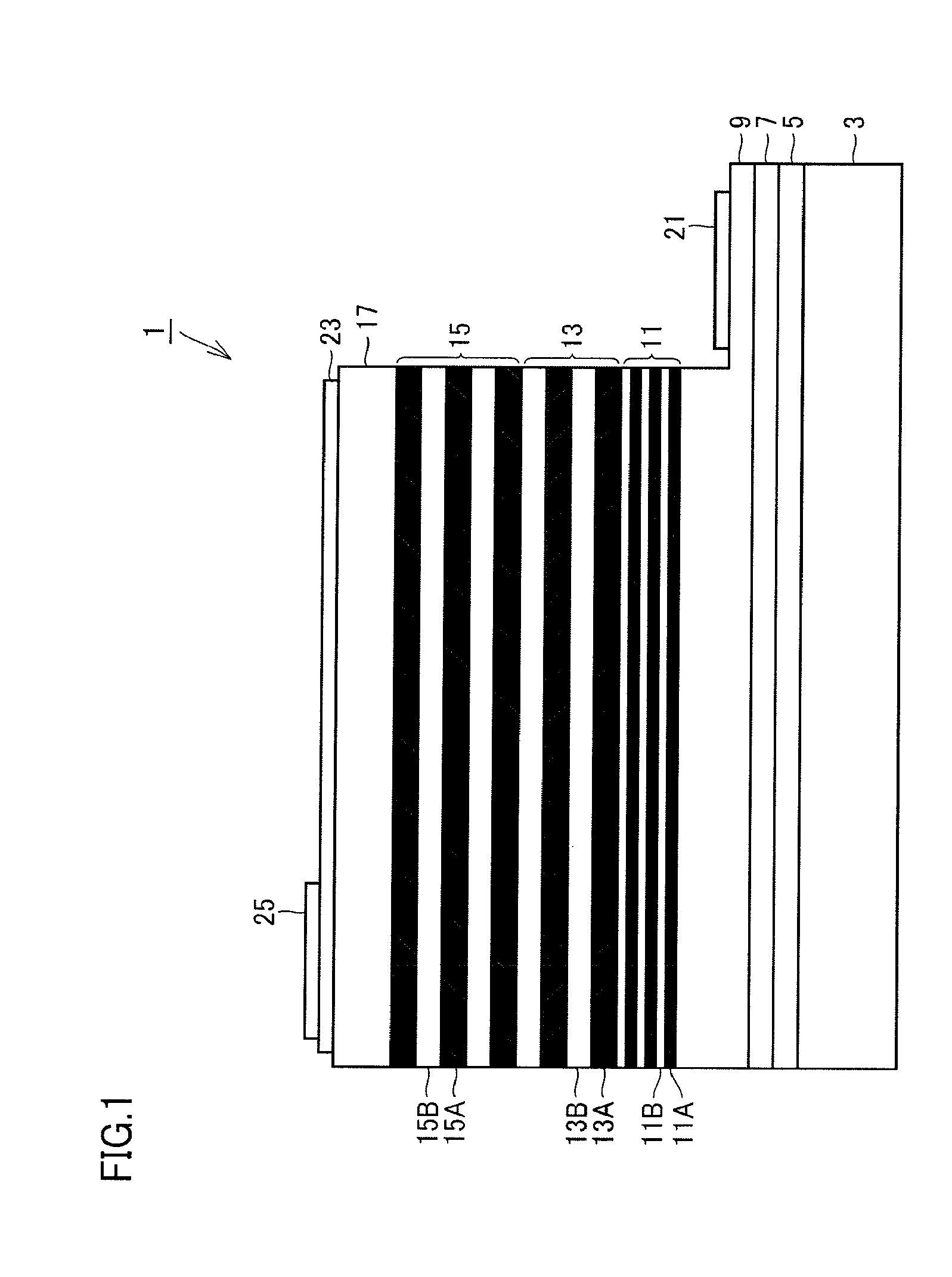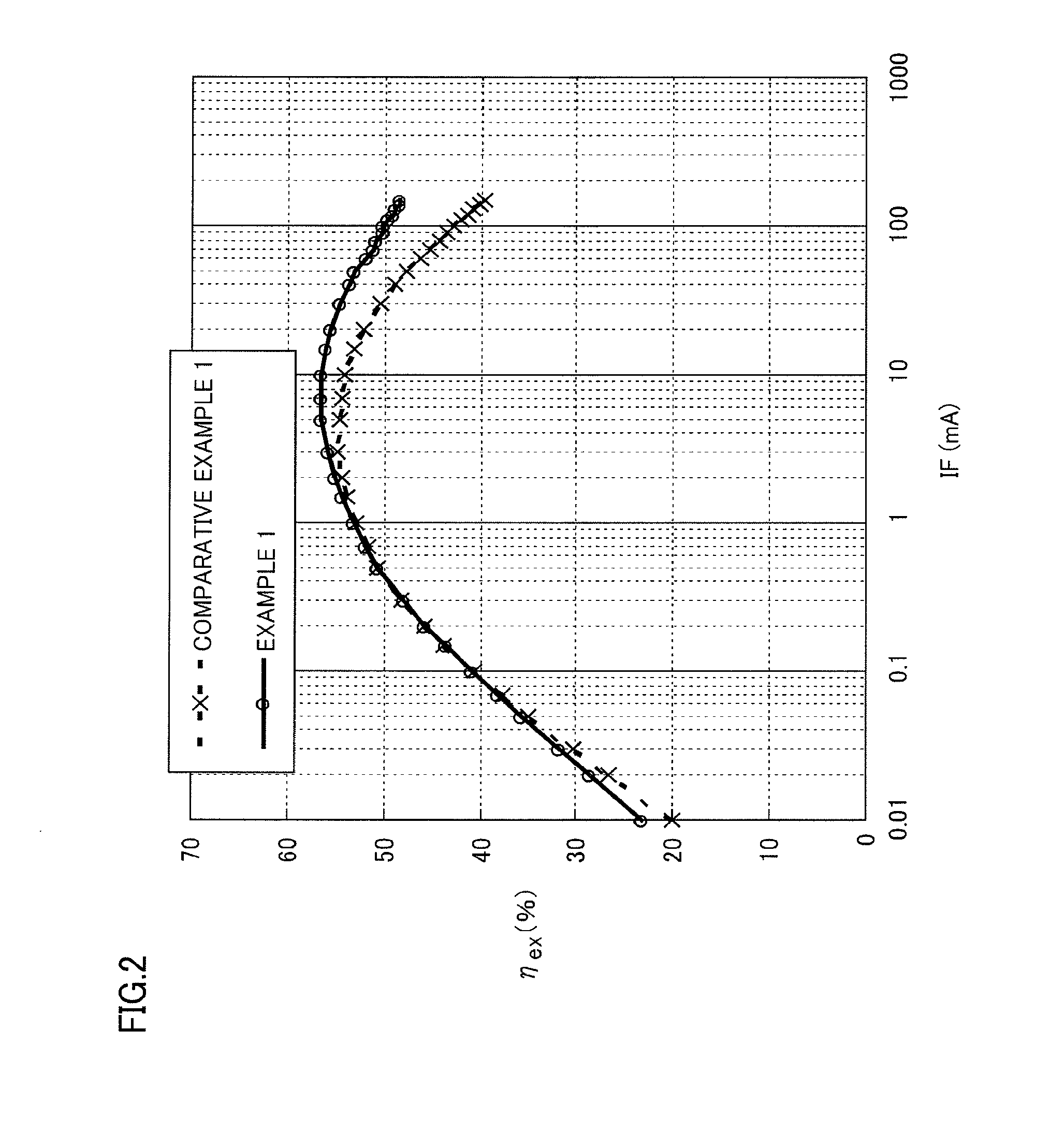Nitride semiconductor light-emitting device and method for producing the same
a light-emitting device and semiconductor technology, applied in semiconductor/solid-state device manufacturing, semiconductor devices, electrical equipment, etc., can solve the problems of increasing power consumption, affecting the light-emitting efficiency per unit power, so as to reduce the injected carrier density, increase the light-emitting area, and increase the chip size
- Summary
- Abstract
- Description
- Claims
- Application Information
AI Technical Summary
Benefits of technology
Problems solved by technology
Method used
Image
Examples
first embodiment
[0054]In a nitride semiconductor light-emitting device 1 according to the first embodiment of the present invention, an average carrier concentration of a long-period superlattice layer 13 is higher than an average carrier concentration of an active layer 15.
[0055]
[0056]Nitride semiconductor light-emitting device 1 according to the present embodiment is made up of a buffer layer 5, a base layer 7, an n-type nitride semiconductor layer 9, a short-period superlattice layer 11, long-period superlattice layer 13, active layer 15, and a p-type nitride semiconductor layer 17 stacked in this order on an upper face of a substrate 3. A part of an upper face of n-type nitride semiconductor layer 9 is exposed from short-period superlattice layer 11 and the like, and on the exposed part, an n-side electrode 21 is provided. On p-type nitride semiconductor layer 17, a p-side electrode 25 is provided with a transparent electrode 23 interposed therebetween.
[0057]
[0058]Substrate 3 may be, for exampl...
first modified example
[0129]In the first modified example, when both undoped layer 13B and well layer 15B do not contain an n-type impurity, the proportion of thickness per one layer of undoped layer 13B to thickness per one period of long-period superlattice layer 13 is made lower than the proportion of thickness per one layer of well layer 15B to thickness per one period of active layer 15. As a result, the proportion of a total volume of undoped layer 13B to a total volume of long-period superlattice layer 13 is lower than the proportion of a total volume of well layer 15B to a total volume of active layer 15. That is, the proportion of a total volume of layers not containing an n-type impurity to a total volume of long-period superlattice layer 13 is lower than the proportion of a total volume of layers not containing an n-type impurity to a total volume of active layer 15. As a result, the proportion of a total volume of layers containing an n-type impurity to a total volume of long-period superlatt...
second modified example
[0131]In the second modified example, concentration of the n-type impurity in doped layer 13A is higher than concentration of the n-type impurity in barrier layer 15A. As a result, the proportion of the ionized impurity is higher in doped layer 13A than in barrier layer 15A. Therefore, the average carrier concentration of long-period superlattice layer 13 is higher than the average carrier concentration of active layer 15.
[0132]Concentration of the n-type impurity in doped layer 13A is preferably more than once concentration of the n-type impurity in barrier layer 15A. Preferably, concentration of the n-type impurity in doped layer 13A is greater than or equal to 1.2 times and less than or equal to 1000 times concentration of the n-type impurity in barrier layer 15A, or less than or equal to 2×1019 cm−3. When concentration of the n-type impurity in doped layer 13A is less than once concentration of the n-type impurity in barrier layer 15A, it can be difficult to make the average car...
PUM
| Property | Measurement | Unit |
|---|---|---|
| flatness | aaaaa | aaaaa |
| Length | aaaaa | aaaaa |
| flatness | aaaaa | aaaaa |
Abstract
Description
Claims
Application Information
 Login to View More
Login to View More - R&D
- Intellectual Property
- Life Sciences
- Materials
- Tech Scout
- Unparalleled Data Quality
- Higher Quality Content
- 60% Fewer Hallucinations
Browse by: Latest US Patents, China's latest patents, Technical Efficacy Thesaurus, Application Domain, Technology Topic, Popular Technical Reports.
© 2025 PatSnap. All rights reserved.Legal|Privacy policy|Modern Slavery Act Transparency Statement|Sitemap|About US| Contact US: help@patsnap.com



